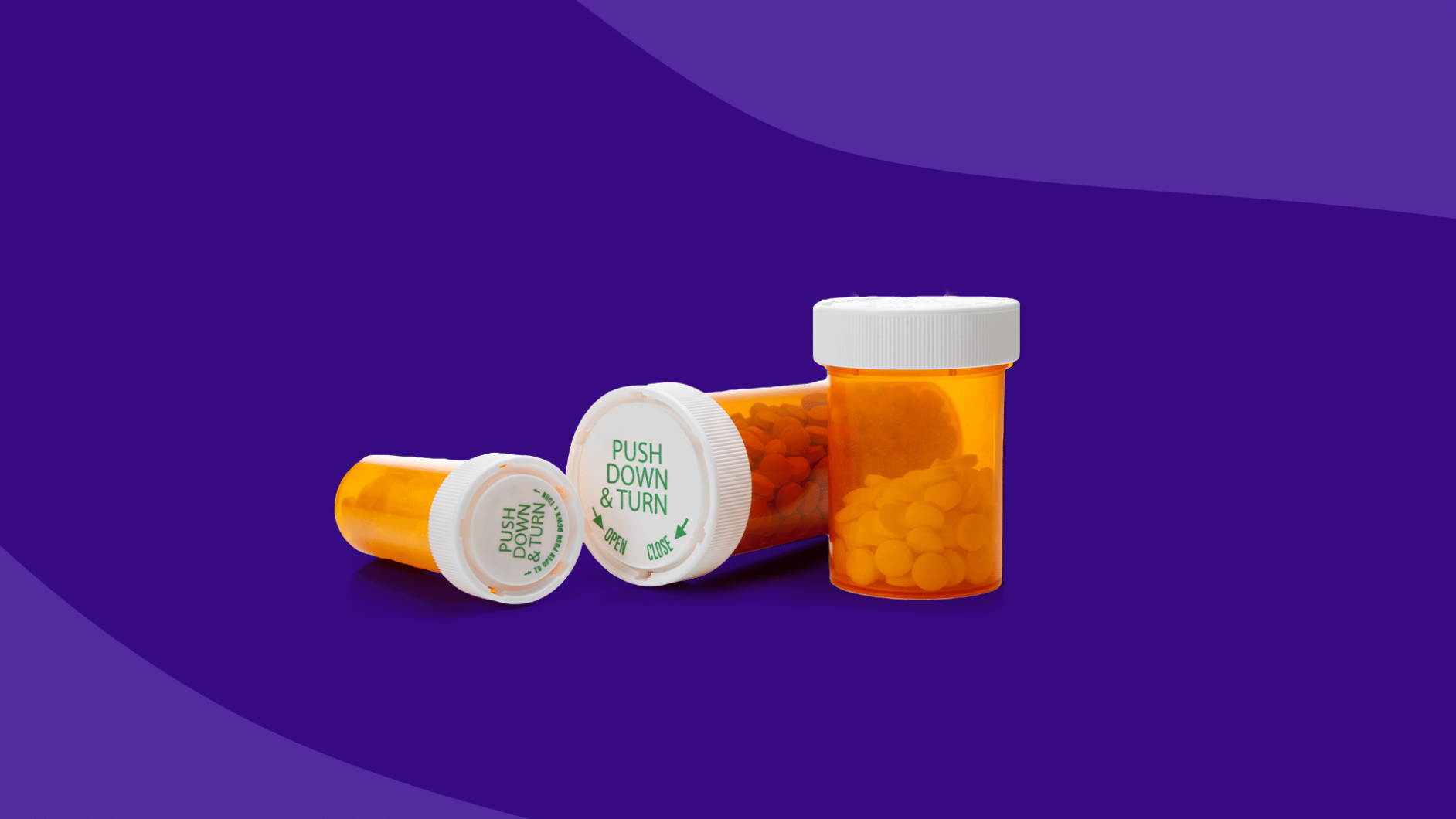Compare diclofenac alternatives | Alternative diclofenac dosage forms | Other NSAIDs | COX-2 Inhibitors | Corticosteroids | Non-NSAID Pain Relievers | Natural alternatives | How to switch meds
Diclofenac, a generic prescription drug, is a nonsteroidal anti-inflammatory drug, oftentimes referred to simply as an NSAID for short. This class of medications is used to treat pain and inflammation associated with various conditions and fevers. Diclofenac is available under several brand names in the marketplace. It also comes in many dosage forms, including immediate-release oral tablets and capsules, delayed-release oral tablets, topical gels, topical solutions, and topical patches.
One of the more common uses of diclofenac in its many forms is treating pain and inflammation associated with osteoarthritis and rheumatoid arthritis. Osteoarthritis is a degenerative joint disease that occurs in older adults when the tissue intended to provide cushion at the ends of the bones in the joints begins to break down. Over time, stiffness, swelling, and joint pain worsens. Eventually, normal daily living is often impaired, sometimes to the point of disability. It most often occurs in the hands, knees, hips, and lower back.
Rheumatoid arthritis (RA) is a chronic, autoimmune disease that occurs when the body’s immune system attacks its tissues. The symptoms are similar to osteoarthritis, but the cause is very different. It can also occur with fever, fatigue, and loss of appetite. RA can occur at any age, even in children.
Other types of pain can be successfully treated with diclofenac, including those from acute injuries or minor trauma, such as sprains, headaches, and menstrual pain in women. However, diclofenac may not be the right choice for some.
What can I take in place of diclofenac?
The most appropriate alternative to diclofenac for you will be determined by your pain level, concurrent medical conditions, and sometimes your insurance coverage or ability to pay.
Patients with an aspirin or salicylate allergy should not take diclofenac or other NSAID drugs. Tylenol (acetaminophen) is often one of the only non-narcotic choices for pain for these patients. Regular use of diclofenac can result in gastritis, gastrointestinal ulcers, or gastrointestinal bleeding, which can be very serious and severe. Concurrent use of corticosteroids, anticoagulants, antiplatelets, chemotherapy, tobacco, and alcohol can increase the likelihood of these GI side effects.
Most NSAID drugs carry the risk of stomach pain and stomach ulcers, and that risk increases with longer durations of treatment and higher doses. It is important to use the lowest dose that provides effective symptom relief. Unfortunately, there are rarely warning signs that these stomach effects are happening. Some patients may dismiss signs such as heartburn for too long, and the issue can become very serious. You should always let your healthcare provider know of any stomach issues when taking diclofenac sodium or any NSAID drugs.
If the gastrointestinal adverse events of NSAIDs are a concern for you, Mobic or Celebrex offers the anti-inflammatory effects of NSAID drugs while bypassing the metabolic pathways that can cause gastrointestinal damage of traditional NSAIDs. Advil and Aleve are available without a prescription and are safe options for the short-term treatment of mild to moderate pain and inflammation. Tylenol is a non-NSAID over-the-counter (OTC) pain relief option for those with aspirin or salicylate allergies. For severe pain in patients who can not tolerate NSAID treatment, opioid analgesics may be the last resort for pain treatment options. Opioid treatment is typically done under the care of pain management specialists. Below is more information on some diclofenac alternatives.
RELATED: Diclofenac side effects and how to avoid them
Compare diclofenac alternatives |
|||
|---|---|---|---|
| Drug name | Uses | Dosage | Savings options |
| Voltaren (diclofenac) | Osteoarthritis, rheumatoid arthritis, ankylosing spondylitis, migraine, pain, dysmenorrhea | 50 mg to 75 mg by mouth twice daily | Voltaren coupons |
| Relafen (nabumetone) | Osteoarthritis, rheumatoid arthritis | 500 mg by mouth twice daily | Relafen coupons |
| Indocin (indomethacin) | Osteoarthritis, rheumatoid arthritis, ankylosing spondylitis, pain | 25 mg by mouth 2 to 3 times daily with food | Indocin coupons |
| Lodine (etodolac) | Pain, rheumatoid arthritis | 400 mg to 500 mg by mouth twice daily | Lodine coupons |
| Feldene (piroxicam) | Osteoarthritis, rheumatoid arthritis | 20 mg by mouth once daily | Feldene coupons |
| Mobic (meloxicam) | Osteoarthritis, rheumatoid arthritis | 7.5 mg to 15 mg by mouth once daily | Mobic coupons |
| Celebrex (celecoxib) | Osteoarthritis, rheumatoid arthritis | 100 mg by mouth twice daily or 200 mg by mouth once daily | Celebrex coupons |
| Arthrotec (diclofenac/ misoprostol) | Osteoarthritis, rheumatoid arthritis in patients at high risk of developing NSAID-induced gastric and duodenal ulcers | 50 mg/ 0.2 mg by mouth three times daily | Arthrotec coupons |
| Advil (ibuprofen) | Arthritis, dysmenorrhea, pain | 400 mg to 800 mg by mouth three to four times daily | Advil coupons |
| Naprosyn (naproxen) | Osteoarthritis, rheumatoid arthritis, ankylosing spondylitis, pain, acute gout, dysmenorrhea | 250 mg to 500 mg by mouth twice daily | Naprosyn coupons |
| Ponstel (mefenamic acid) | Pain, dysmenorrhea | 250 mg by mouth every 6 hours | Ponstel coupons |
| Ansaid (flurbiprofen) | Osteoarthritis, rheumatoid arthritis | 100 mg by mouth two to three times daily | Ansaid coupons |
| Decadron (dexamethasone) | Rheumatic disorders, Adrenocortical abnormalities, anaphylactic reactions, other immune-related and inflammatory conditions | 0.75 mg to 9 mg by mouth daily in two to four divided doses adjusted to response | Decadron coupons |
| Deltasone (prednisone) | Maintenance treatment in patients with severe, persistent asthma, multiple other immune-related and inflammatory conditions | 7.5 mg to 60 mg by mouth once daily in the morning adjusted to response | Deltasone coupons |
| Cymbalta (duloxetine) | Major depression, generalized anxiety disorder, chronic musculoskeletal pain, chronic back pain | 60 mg by mouth once daily | Cymbalta coupons |
Other alternatives to diclofenac
- Vimovo (esomeprazole/ naproxen)
- Duexis (famotidine/ ibuprofen)
- Clinoril (sulindac)
- Orudis KT (ketoprofen)
- Dolobid (diflunisal)
- Daypro (oxaprozin)
- Tolectin DS (tometin)
- Nalfon (fenoprofen)
- Toradol (ketorolac)
- Tylenol (acetaminophen)
- Aleve (naproxen)
- Orapred (prednisolone)
- Zostrix (capsaicin)
Top 5 diclofenac alternatives
The following are some of the most common alternatives to diclofenac.
1. Alternative diclofenac dosage forms
Diclofenac is an NSAID with many available dosage forms including immediate-release oral dosage forms, delayed-release oral dosage forms, topical gels, topical solutions, topical patches, and injections. The associated risk with each dosage form may vary slightly, but there are still risks with each form. Insurance payors may prefer one form over another, or at least require that you submit one form before they will approve another type. Extended-release dosage forms offer advantages such as less frequent dosing. All oral dosage forms of diclofenac should be taken with food.
Examples: Voltaren, Zipsor, Flector, Pennsaid, Cataflam, and Cambia
2. Other Nonsteroidal Anti-inflammatory Drugs (NSAIDs)
When diclofenac is not the right choice or has not provided the relief a patient is seeking for their pain or inflammation, another NSAID may be a good choice. Some NSAIDs are available OTC and without prescription, such as naproxen and ibuprofen, and can be taken for short periods of time for mild to moderate pain and inflammation, as well as fever. Other prescription NSAIDs such as flurbiprofen and indomethacin may also be alternatives to diclofenac.
Examples: Advil (ibuprofen), Aleve (naproxen), Indocin (indomethacin), Ansaid (flurbiprofen), and Feldene (piroxicam)
3. COX-2 Inhibitors
For many, NSAID treatment is not an option due to its effects on the gastrointestinal system. The potential for gastritis, ulceration, and GI bleeding can be severe. COX-2 inhibitors offer the pain and inflammation relief of NSAIDs but avoid the pathway that causes the dangerous GI side effects of NSAIDs. For many, this is the best option to balance the relief from the symptoms and avoid the health risk of traditional NSAIDs.
Examples: Mobic (meloxicam), Celebrex (celecoxib)
4. Corticosteroids
In the treatment of osteoarthritis and rheumatoid arthritis, corticosteroids can play an effective role because they slow or shut down the body’s own natural immune response, leading to inflammation and pain. Corticosteroids can be used in conjunction with NSAIDs or in place of them when a patient is unable to take NSAIDs. Ideally, corticosteroids should only be used for short-term therapy, but in some cases, longer treatments may be necessary. Corticosteroid treatment does carry some increased risk of events such as swelling, high blood pressure, mood swings, and delirium.
Examples: Decadron (dexamethasone), Deltasone (prednisone), and Orapred (prednisolone)
5. Non-NSAID pain relievers
For patients with an allergy or other contraindication to NSAID treatment, options can be limited to treating the pain and inflammation associated with many disorders. Tylenol, or acetaminophen, is one of the only non-NSAID and non-opioid painkiller options available to patients. It is available without a prescription. It should not be used in patients with liver disease, and it should not be taken if the patient has consumed considerable amounts of alcohol.
Examples: Tylenol (acetaminophen)
Natural alternatives to diclofenac
There are vitamins and supplements with anti-inflammatory properties which may help support your health in disorders that cause pain and inflammation. Omega-3 fish oils, curcumin (turmeric), and green tea have long been recognized for their anti-inflammatory benefits. Ones you may not recognize as well are white willow bark and maritime pine bark. Capsaicin, from the chili pepper, is found in many arthritis rubs and gels and has been used for years to provide relief for arthritis patients.
You may have read that apple cider vinegar offers anti-inflammatory properties, whether cooking with it or drinking it, but the Arthritis Foundation says that’s simply not true. While this vinegar has some potential health benefits concerning cholesterol and appetite suppression, there’s no evidence to support that it will relieve pain and inflammation.
How to switch to a diclofenac alternative
Diclofenac can prolong bleeding time and should be used cautiously in patients with hemophilia or other disease states that affect blood clotting. Caution should be exercised when using diclofenac in patients with pre-existing cardiovascular disease, such as a history of heart attack or stroke. Diclofenac can also cause hepatotoxicity and should be used cautiously in patients with impaired liver function or any signs of liver disease. Intravenous diclofenac should be avoided in patients with kidney disease.
If you feel your diclofenac prescription isn’t right for you, there may be other options. Do not stop your diclofenac without getting medical advice from your doctor first. If you feel diclofenac or your current therapy isn’t suitable, speak with your prescriber about switching. While the alternatives presented here are not intended to be medical advice, they are meant to give you options to talk to your prescriber about.
If the cost of your therapy is one of your concerns, visiting www.SingleCare.com can help you know the best cash price and which pharmacy to use to get the best savings. Your pharmacist or insurance company can help you determine your insurance coverage for the options you are considering.











